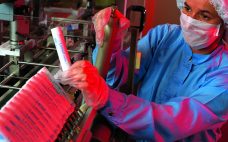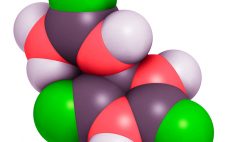In BPIâs âAsk the Expertâ webcast on 4 October 2017, Mike Johnson (market development manager at Entegris Life Sciences) discussed single-use bags and gas permeation. Johnsonâs Presentation Permeation rates are a function of fluid properties, the type of material being penetrated, and application temperature. Standardized test methods used to determine permeability characteristics include ASTM D1434 and ASTM D3985. A fixture in Entegrisâs test apparatus holds a sample plaque that is flanked upstream by high-pressure gas and downstream by a sensor…
2017
Advances in Gene Therapy: MiniTEM™ Represents a Paradigm Shift in the Characterization of Viral Vectors
Gene therapy is one of the most progressing fields in life sciences. Although only eight gene therapy products have reached market approval, the pipeline is robust with ~500 candidates in different stages of clinical development. More than 1,700 clinical studies are being conducted, and the value of this industry segment is expected to grow by ~17% annually over the next 10 years. Gene therapy involves using genetic material to fight or prevent disease. The gene is delivered into a patientâs…
Building Competency in Basic Science: The Secret Weapon of Tomorrowâs Bioprocessing Technician
Todayâs bioprocessing technicians are highly skilled professionals who can operate large automated equipment, juggle numerous support activities, and document manufacturing deviations. In coming years, their jobs will become even more rigorous as companies push more decision-making to the production floor to save time and resources. With the trend toward smaller batches made in bench-scale and/or single-use equipment, this strategy becomes easier to implement. One way to foster improved decision-making on the production floor is to hire or promote employees who…
Addressing Knowledge Gaps and Skills Development: Modular Training Keeps the Bioindustry at the Leading Edge
One major challenge facing the global bioindustry today is finding talented individuals to work in the type of highly skilled interdisciplinary environments necessary for effective bioprocess development. Ideally, such individuals require a combination of technical knowledge and expertise spanning biological sciences, physical sciences, mathematics, and engineering. Numerous industry surveys have repeatedly stressed the lack of suitably trained individuals equipped with necessary skills to work at the biologyâengineering interface to meet the growing and changing demands of industry. The challenge is…
Hands-On Training for Biopharmaceutical Careers: Trainees Gain Practical Experience in Realistic Production Environments
At the April meeting of the BPI International Summit (25â26 April 2017) delegates were treated to a tour of a new training facility. The Biotech Training Facility is about a 20-minute drive from the Amsterdam airport and located in the Leiden Bioscience Park. The park houses companies that employ ~18,000 life science workers. In addition, the Leiden University and the Leiden Academic Medical Center complement the dynamic high-tech environment that facilitates establishment of such a knowledge and experience center as…
Introducing NIIMBL: Accelerating Innovation in Biopharmaceutical Manufacturing
The National Institute for Innovation in Manufacturing Biopharmaceuticals (NIIMBL) was launched in March 2017 as a cooperative agreement with the National Institute for Standards and Technology (NIST), part of the US Department of Commerce. NIIMBL is one of the newest members of Manufacturing USA, a network of manufacturing innovation institutes through which industry, academia, and government work together to accelerate implementation of advanced manufacturing and develop a trained workforce in several key sectors of ththe US economy. NIIMBLâs mission is…
October From the Editor
Often I am dismayed to hear local news reporting of early stage clinical milestones for therapies that may still be years in development. I assume that those reporters and news editors receive pretty much the same press releases that we do here at BPI. But I worry that a more general readership hears only the hype, missing details of the process and time required for approval. More than one letter to the editor has opined that âdelaysâ in bringing new…
October Spotlight
Introducing New Editorial Advisor Dr. Sanjay Nilapwar works as a purification process scientist in the novel-molecules group of Medimmune in Gaithersburg, MD, where he is also part of the platform chemistry, manufacturing, and controls (CMC) development team for antibodyâdrug conjugate products. In this position, he looks after the transitioning of ADC and monoclonal antibody (MAb) molecules as candidate drugs from development to the manufacturing stage, which encompasses cycles 1 and 2 purification process development, technology transfer and related CMC aspects…
Particulate Contamination in Single-Use Systems: Challenges of Detection, Measurement, and Continuous Improvement
Patients receiving particulate contamination through parenteral delivery of biopharmaceuticals presents a significant potential health risk. However, the severity of that risk often is unclear. It depends on the route of administration, dosage volume administered, particle properties and amount received, and the ultimate fate of particles within a patientâs body (1). The appearance of particulate contamination also can be a visible indicator of product quality. Consequently, when such contamination is discovered within biopharmaceutical manufacturing operations, often it triggers costly investigations and…
Recent Advances in Endotoxin Removal: An Upgrade to a Traditional Method and a New Adsorption Chemistry
Endotoxin contamination has been the bane of the bioprocessing industry since its inception. Endotoxins are everywhere: They are toxic and/or interfere with every type of therapeutic, diagnostic, and research product; they are indestructible within the limits of product tolerance; and they are difficult to remove (1â4). Beyond that, they interact with various biological species in ways that prevent accurate measurement (5, 6). Managing these issues has been a focus of the industry for at least half a century, yet it…








